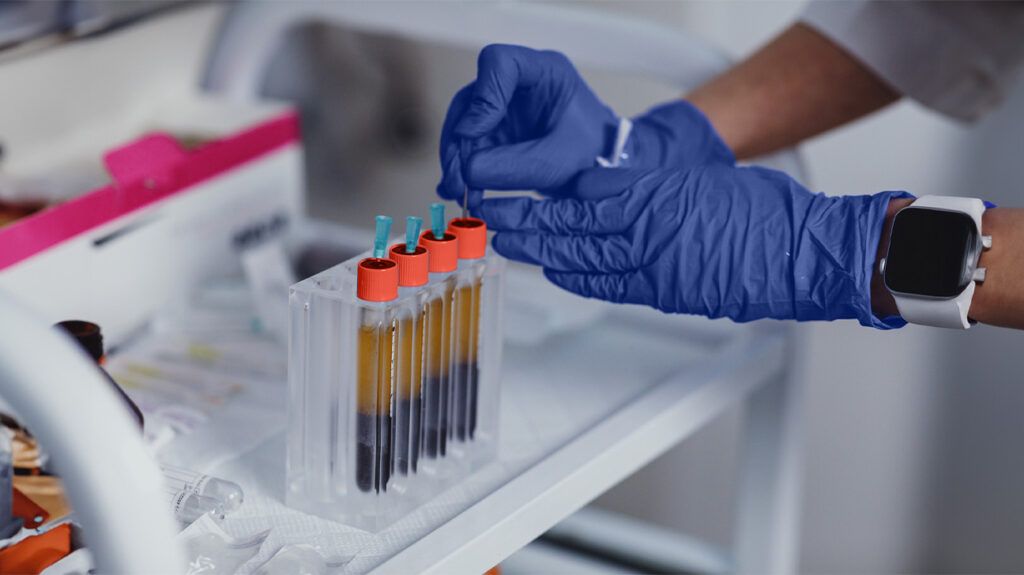Hypercholesterolemia is a type of hyperlipidemia, even though some use the terms interchangeably. Hyperlipidemia refers to raised levels of fats in the blood and hypercholesterolemia refers to high cholesterol levels.
Lipids are oily, fatty, and waxy substances in the blood and proteins that help them move around the body. They are vital for energy and nutrient storage, insulation, and the protection of vital organs. At typical levels, lipids also support a healthy metabolism.
However, high levels of lipids — one of which is cholesterol — can mean they build up on the walls of crucial blood vessels, affecting how blood moves around the body and increasing a person’s risk of heart disease.
This article explores hyperlipidemia and hypercholesterolemia in more detail, including how doctors diagnose and treat them.
A note about sex and gender
Sex and gender exist on spectrums. This article will use the terms “male,” “female,” or both to refer to sex assigned at birth. Click here to learn more.

Hyperlipidemia refers to
Triglycerides are the
Cholesterol is a fatty substance. The liver usually makes enough cholesterol, but some foods also contain cholesterol. A type of protein, called lipoprotein, transports cholesterol around the body.
Possible causes of hyperlipidemia include:
- Diet: Consuming a large amount of foods high in saturated fats or trans fats might increase the risk of hyperlipidemia.
- Other lifestyle factors: These include not exercising enough, drinking too much alcohol, not managing stress, smoking, and not getting enough sleep.
- Medications: Certain drugs may increase lipid levels, such as amiodarone, thiazide, and beta-blockers.
- Certain health conditions: Some of these include hypothyroidism, diabetes, and polycystic ovary syndrome.
- Family history: Genes passed from parents to children can play a significant role in conditions called familial hyperlipidemias.
The following factors may also increase a person’s risk for hyperlipidemia:
- being assigned male at birth, although the risk for females increases after menopause
- being white
- being under 55 to 60 years of age and having coronary artery disease
Hypercholesterolemia is one type of hyperlipidemia. It occurs when low-density lipoprotein (LDL) cholesterol levels are high and high-density lipoprotein (HDL) cholesterol levels are low.
LDL transports cholesterol to the cells, but HDL transports cholesterol to the liver, where it breaks down. High LDL levels can lead to a cholesterol buildup on the artery walls.
The
Doctors can check blood lipid levels using a blood test called a lipoprotein profile. Typical cholesterol levels differ by age and sex, as outlined in the table below:
| Age and sex | Healthy level in milligrams per deciliter (mg/dL) |
|---|---|
| under 19 years of age, any sex | Total cholesterol: Lower than 170 Non-HDL: Lower than 120 LDL: Lower than 110 HDL: Higher than 45 |
| males over 20 years of age | Total cholesterol: Lower than 200 Non-HDL: Lower than 130 LDL: Lower than 100 HDL: 40 to 60 or higher |
| females over 20 years of age | Total cholesterol: Lower than 200 Non-HDL: Lower than 130 LDL: Lower than 100 HDL: 50 to 60 or higher |
A doctor will confirm a
- having LDL cholesterol above 190 mg/dL on its own
- having LDL cholesterol above 160 mg/dL with one other risk factor
- having LDL cholesterol above 130 mg/dL with two other risk factors
Doctors use the
| Lipid health status | Triglyceride level (mg/dL) |
|---|---|
| normal | less than 150 for adults, less than 90 for people under 19 years of age |
| borderline high | 150 to 199 |
| high | 200 to 499 |
| very high | 500 or more |
Lifestyle modifications can
- Eating for heart health: A cardiac diet includes lean meats, low fat dairy, and healthy oils. It also limits foods with large amounts of saturated or trans fats and includes higher quantities of fruits, vegetables, legumes, whole grains, and nuts.
- Engaging in physical activity: People should aim for a minimum of 150 minutes of moderate intensity exercise every week.
- Quitting smoking: Quitting smoking improves artery function, boosts HDL cholesterol, and reduces a person’s risk of heart disease.
- Managing body weight: People with obesity may help lower lipid levels and reduce heart disease risk by losing weight.
- Managing stress: Chronic stress
may affect cholesterol levels, so adopting relaxation techniques may be beneficial for those with high LDL cholesterol. - Limiting alcohol: People should speak with a doctor for advice about limiting their alcohol intake.
- Getting enough sleep: Sleeping for 7 to 9 hours each day may help manage cholesterol levels.
Doctors may also prescribe medications to help lower lipid levels in the blood. They most commonly prescribe statins, but these are not suitable for everyone, and other medications are also available.
People should speak with a doctor to find out which medications may work best for them.
Hyperlipidemia can cause the buildup of cholesterol on the artery walls — a process known as atherosclerosis — in the form of a substance called plaque. This restricts blood flow and can lead to blockages. This may contribute to
Hypercholesterolemia refers to high cholesterol levels and hyperlipidemia refers to raised levels of fats in the blood. Hypercholesterolemia is a type of hyperlipidemia.
Any type of hyperlipidemia can develop due to lifestyle factors, such as a high fat diet, low exercise levels, or smoking.
Modifying these lifestyle factors can help reduce cholesterol and other fats in the blood. Doctors may also prescribe medications to manage hyperlipidemia.
People should speak with a doctor if they are concerned about their cholesterol or triglyceride levels.
